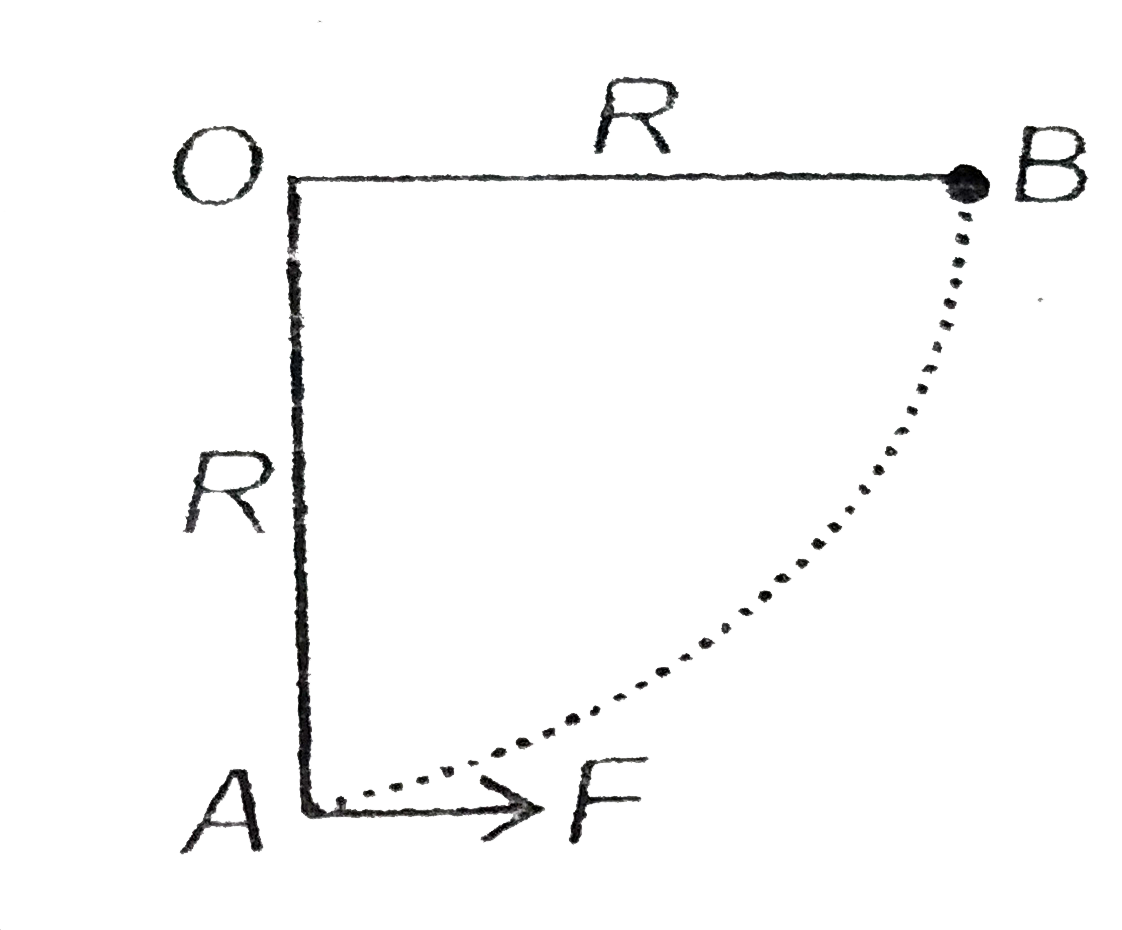The KE acquired by a mass m in travelling a certain distance s, starting from rest, under the action of a constant force is directly proportional to :
m
√m
1√m
none of these
To solve the problem, we need to analyze the relationship between the kinetic energy (KE) acquired by a mass m when it travels a distance s under the influence of a constant force F.
1. Understanding Kinetic Energy:
The kinetic energy (KE) of an object is given by the formula:
KE=12mv2
where m is the mass and v is the velocity of the object.
2. Using Newton's Second Law:
According to Newton's second law, the force F acting on an object is equal to the mass m multiplied by its acceleration a:
F=ma
From this, we can express acceleration as:
a=Fm
3. Using the Equations of Motion:
Since the object starts from rest, we can use the equation of motion that relates distance s, initial velocity u (which is 0), acceleration a, and final velocity v:
v2=u2+2as
Substituting u=0:
v2=2as
4. Substituting Acceleration:
Now, substituting a=Fm into the equation:
v2=2(Fm)s
5. Finding Kinetic Energy in Terms of Force and Distance:
Now we can substitute v2 back into the kinetic energy formula:
KE=12mv2=12m(2Fms)
Simplifying this gives:
KE=F⋅s1
6. Conclusion:
From the above derivation, we see that the kinetic energy KE acquired by the mass m is directly proportional to the work done by the force F over the distance s. Thus, we conclude that the kinetic energy acquired is directly proportional to the distance s traveled under the action of a constant force F.
Final Answer:
The kinetic energy acquired by a mass m in traveling a certain distance s, starting from rest under the action of a constant force, is directly proportional to the distance s.
The kinetic energy (KE) of an object is given by the formula:
KE=12mv2
where m is the mass and v is the velocity of the object.
According to Newton's second law, the force F acting on an object is equal to the mass m multiplied by its acceleration a:
F=ma
From this, we can express acceleration as:
a=Fm
Since the object starts from rest, we can use the equation of motion that relates distance s, initial velocity u (which is 0), acceleration a, and final velocity v:
v2=u2+2as
Substituting u=0:
v2=2as
Now, substituting a=Fm into the equation:
v2=2(Fm)s
Now we can substitute v2 back into the kinetic energy formula:
KE=12mv2=12m(2Fms)
Simplifying this gives:
KE=F⋅s1
From the above derivation, we see that the kinetic energy KE acquired by the mass m is directly proportional to the work done by the force F over the distance s. Thus, we conclude that the kinetic energy acquired is directly proportional to the distance s traveled under the action of a constant force F.
The kinetic energy acquired by a mass m in traveling a certain distance s, starting from rest under the action of a constant force, is directly proportional to the distance s.
Topper's Solved these Questions
- BOOK - PRADEEPCHAPTER - WORK AND ENERGYEXERCISE - Continuous Assessment I oral testing10videos
WORK AND ENERGY
- BOOK - PRADEEPCHAPTER - WORK AND ENERGYEXERCISE - II Quiz Testing5videos
WORK AND ENERGY
- BOOK - PRADEEPCHAPTER - WORK AND ENERGYEXERCISE - Continuous Assessment24videos
WORK AND ENERGY
- BOOK - PRADEEPCHAPTER - SOUNDEXERCISE - Model Test (sec - B)12videos
SOUND
Similar Questions
Knowledge Check
- Question 1 - Select One
The K.E. acquired by a mass m in travelling a certain distance d, starting from rest, under the action of a constant force is directly propotional to
AmB√mC1√mDnone of the above - Question 2 - Select One
The KE acquired by a mass m in travelling a certain distance s, starting from rest, under the action of a constant force is directly proportional to :
A√mBIndependent of mC1/√mDm - Question 3 - Select One
The velocity acquired by a mass m in travelling a certain distance d starting from rest under the action of a constant force is directly proportional to :-
A√mBIndependent of mC1√mDm
The kinetic energy acquired by a mass (m) in traveling distance starting from rest under the action of constant force is directly proportional to:
View SolutionThe kinetic energy acquired by a mass m travelling a certain distance d, starting from rest, under the action of a force F such that the force F is directly proportional to t is
View SolutionThe kinetic energy acquired by a body of mass m in travelling a certain distance starting from rest, under a constant force is
View SolutionThe kinetic energy acquired by a mass m staring from rest under the action of a force F=kt is :
View SolutionA particle of mass m moves from rest under the action of a constant force F which acts for two seconds. The maximum power attained is
View Solution


